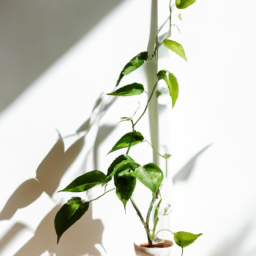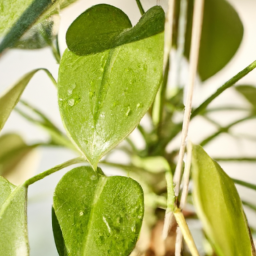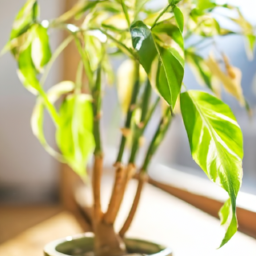
Are you looking to bring a touch of nature into your home? Indoor plants under skylight are the perfect way to do just that. Not only do these plants add a vibrant and refreshing aesthetic to any space, but they also offer numerous benefits for your overall well-being. Whether you have a skylight already installed or you’re considering adding one to your home, this blog post will guide you through the best indoor plants that thrive under skylight conditions. From low-light tolerant varieties to those that require direct sunlight, we’ll explore a range of options to help you create a green oasis in your indoor space. So, let’s dive in and discover the beauty and benefits of indoor plants under skylight!
Benefits of Indoor Plants Under Skylight
Introduction
Indoor plants have become increasingly popular in recent years, not only for their aesthetic appeal but also for their numerous health benefits. When placed under a skylight, indoor plants can thrive and provide even more advantages. In this article, we will explore the benefits of having indoor plants under a skylight and how you can create an ideal environment for your green companions.
Improved Air Quality
One of the significant advantages of having indoor plants under a skylight is the improved air quality they offer. Plants naturally absorb carbon dioxide and release oxygen through photosynthesis. When placed under a skylight, they have direct access to sunlight, which enhances their ability to photosynthesize. This increased photosynthesis leads to higher oxygen production, resulting in fresher and cleaner air in your home.
Additionally, indoor plants act as natural air purifiers by removing harmful toxins from the air. Studies have shown that certain plants, such as snake plants and peace lilies, can effectively filter pollutants like formaldehyde, benzene, and trichloroethylene. By having these plants under a skylight, you can maximize their air-purifying capabilities and create a healthier living environment.
Mood Enhancement
Another benefit of placing indoor plants under a skylight is the positive impact they have on our mood and overall well-being. Sunlight is a natural mood booster, and when combined with the presence of greenery, it can significantly improve our mental state. Exposure to natural light stimulates the production of serotonin, a hormone that promotes feelings of happiness and relaxation.
Furthermore, studies have shown that being around plants can reduce stress levels and improve concentration and productivity. By positioning indoor plants under a skylight, you can ensure they receive ample sunlight, allowing them to thrive and positively impact your mood and productivity throughout the day.
Biophilic Connection
Humans have an innate connection with nature, known as biophilia. Incorporating indoor plants under a skylight helps bridge the gap between the indoors and the outdoors, creating a more harmonious living space. Skylights allow natural light to flood in, creating a sense of openness and connection with the outside world.
This biophilic connection has been proven to have numerous benefits, including reduced blood pressure, improved cognitive function, and faster recovery from illness or surgery. By introducing indoor plants under a skylight, you can amplify this connection and bring nature indoors, reaping the rewards of a more balanced and calming environment.
Conclusion
In conclusion, placing indoor plants under a skylight offers a myriad of benefits. From improved air quality to enhanced mood and a stronger biophilic connection, these green companions can transform your living space into a healthier and more inviting environment. Consider incorporating indoor plants under a skylight to enjoy the full potential of these natural wonders and experience the positive impact they can have on your overall well-being.

Best Indoor Plants for Skylight Environments
When it comes to creating a thriving indoor garden under a skylight, choosing the right plants is crucial. Skylights provide an abundance of natural light, which can be both a blessing and a challenge for indoor plants. While some plants thrive in bright, direct sunlight, others prefer more indirect or filtered light. In this guide, we will explore some of the best indoor plants that can thrive in skylight environments, ensuring a beautiful and healthy indoor garden.
1. Snake Plant (Sansevieria trifasciata)
The snake plant, also known as mother-in-law’s tongue, is a popular choice for indoor gardens under skylights. This plant is known for its ability to tolerate a wide range of light conditions, making it suitable for both bright and slightly shaded areas. The snake plant has long, upright leaves that come in various shades of green, making it a visually appealing addition to any space.
One of the key benefits of the snake plant is its air-purifying properties. It is known to filter out toxins such as formaldehyde and benzene, making it an excellent choice for improving indoor air quality. Additionally, the snake plant is a low-maintenance plant that requires minimal watering, making it perfect for busy individuals or those new to indoor gardening.
In terms of care, the snake plant prefers well-draining soil and can tolerate infrequent watering. It is important to avoid overwatering, as this can lead to root rot. Place the snake plant near the skylight, ensuring it receives a few hours of direct sunlight each day. However, if your skylight provides intense, full sun exposure, it is advisable to place the snake plant slightly away from the direct rays to prevent leaf burn.
2. Pothos (Epipremnum aureum)
Pothos, also known as Devil’s Ivy, is another excellent choice for indoor gardens under skylights. This trailing vine plant features heart-shaped leaves that come in various shades of green, making it a versatile and attractive addition to any space. Pothos is known for its ability to thrive in low-light conditions, making it ideal for areas that receive indirect or filtered sunlight.
One of the reasons why pothos is a popular choice for indoor gardening is its ability to purify the air. It can remove toxins such as formaldehyde, benzene, and xylene from the environment, creating a healthier living space. Pothos is also a relatively low-maintenance plant, making it suitable for beginners or individuals with a busy lifestyle.
When it comes to caring for pothos, it is important to provide well-draining soil and water the plant when the top inch of soil feels dry. Avoid overwatering, as this can lead to root rot. Place the pothos near the skylight, ensuring it receives indirect or filtered light throughout the day. If the skylight provides intense, direct sunlight, it is advisable to place the pothos slightly away from the rays to prevent leaf burn.
3. Spider Plant (Chlorophytum comosum)
The spider plant is a popular choice for indoor gardens due to its unique arching leaves and easy-care nature. This plant thrives in bright, indirect light, making it an ideal candidate for skylight environments. Spider plants are known for their ability to produce offshoots or “spiderettes,” which can be propagated to create new plants.
One of the key benefits of spider plants is their air-purifying properties. They can remove toxins such as formaldehyde and carbon monoxide from the air, improving indoor air quality. Spider plants are also non-toxic to pets, making them a safe choice for households with furry friends.
Caring for spider plants is relatively simple. They prefer well-draining soil and should be watered when the top inch of soil feels dry. Avoid overwatering, as this can lead to root rot. Place the spider plant near the skylight, ensuring it receives bright, indirect light throughout the day. If the skylight provides intense, direct sunlight, it is advisable to place the spider plant slightly away from the rays to prevent leaf burn.
By selecting the right indoor plants for your skylight environment, you can create a beautiful and thriving indoor garden. Whether you choose the snake plant, pothos, or spider plant, these plants are sure to add a touch of greenery and freshness to your space. Remember to provide the necessary care and attention to ensure your plants thrive under the natural light provided by your skylight.
So go ahead, embrace the beauty of indoor gardening under a skylight and enjoy the benefits of a natural, green oasis in your home.

Tips for Caring for Indoor Plants Under Skylights
Indoor plants can bring life and beauty to any space, and when placed under a skylight, they can thrive even more. Skylights provide ample natural light, which is essential for the growth and well-being of indoor plants. However, caring for indoor plants under skylights requires a bit of extra attention. In this article, we will discuss some useful tips to help you keep your indoor plants healthy and thriving under skylights.
1. Choose the Right Plants
Not all plants are suitable for growing under skylights. When selecting indoor plants for your skylit space, consider their light requirements. Some plants thrive in direct sunlight, while others prefer indirect or filtered light. Choose plants that can tolerate the intensity of light that your skylight provides. Some popular choices for indoor plants under skylights include pothos, spider plants, and peace lilies.
Additionally, consider the size and growth habit of the plants. Make sure they have enough space to grow and won’t overcrowd the area under the skylight. This will ensure that each plant receives sufficient light and air circulation.
Remember to also consider the temperature and humidity levels near your skylight. Some skylights can cause temperature fluctuations, so choose plants that can tolerate these changes.
2. Monitor Light Levels
While skylights provide natural light, it’s important to monitor the light levels your indoor plants are receiving. Some skylights may let in too much direct sunlight, which can scorch the leaves of certain plants. Observe your plants closely and adjust their placement accordingly. If you notice signs of sunburn, such as yellowing or browning leaves, consider using sheer curtains or blinds to filter the light.
On the other hand, if your skylight doesn’t provide enough light, you may need to supplement with artificial lighting. Place grow lights near the plants to ensure they receive the necessary amount of light for healthy growth. LED grow lights are energy-efficient and can be a great option for indoor plants under skylights.
Remember to rotate your plants regularly to ensure even light distribution. This will prevent your plants from leaning or growing towards the light source, which can result in uneven growth.
3. Water and Humidity
Proper watering is crucial for the health of indoor plants under skylights. The amount and frequency of watering will depend on various factors, such as the type of plant, potting mix, and environmental conditions. It’s important to avoid overwatering, as it can lead to root rot and other issues.
Before watering, check the moisture level of the soil by inserting your finger about an inch deep. If it feels dry, it’s time to water the plant. Water thoroughly until the excess water drains out from the bottom of the pot. Empty the saucer or tray to prevent water from pooling, which can lead to root rot.
Humidity is also important for many indoor plants. Skylights can sometimes create dry conditions, especially during winter months. Increase humidity levels by misting the plants with water or placing a tray filled with water near the plants. You can also consider using a humidifier to maintain optimal humidity levels.
In conclusion, caring for indoor plants under skylights requires selecting the right plants, monitoring light levels, and providing adequate water and humidity. By following these tips, you can create a thriving indoor garden that adds beauty and freshness to your space. Remember to regularly inspect your plants for any signs of pests or diseases, and take appropriate action to prevent their spread. Enjoy the benefits of indoor plants under skylights and watch them flourish in the natural light!
Recap of this article
Indoor plants can bring life and freshness into any space, and what better way to enhance their growth than by placing them under a skylight? Skylights provide an abundant source of natural light, mimicking the conditions that plants thrive in outdoors. By strategically placing your indoor plants under a skylight, you can create a mini oasis that not only adds beauty to your home but also provides numerous health benefits.
Skylights offer a unique advantage for indoor plants as they allow sunlight to penetrate directly into the room, providing the perfect amount of light for photosynthesis. This means your plants will receive the necessary energy to grow and flourish. Additionally, skylights provide a more consistent light source throughout the day, unlike windows that may cast shadows at certain times. This consistent light exposure helps plants maintain a healthy growth cycle and prevents them from becoming leggy or weak. So, whether you have a collection of leafy greens or flowering plants, placing them under a skylight will give them the best chance to thrive.
Here are some questions from our readers:
Q1: What are the best indoor plants for a skylight?
A1: When it comes to indoor plants that thrive under a skylight, there are several great options. Some of the best choices include snake plants, pothos, spider plants, peace lilies, and ZZ plants. These plants are known for their ability to tolerate a variety of light conditions, making them ideal for spaces with a skylight.
Q2: Do indoor plants need direct sunlight from a skylight?
A2: While direct sunlight can be beneficial for some indoor plants, not all plants require it. Many indoor plants, including those that do well under a skylight, prefer bright but indirect light. Skylights often provide enough light to keep these plants healthy and thriving without the risk of scorching their leaves.
Q3: How should I care for indoor plants under a skylight?
A3: Caring for indoor plants under a skylight is similar to caring for plants in any other location. It’s important to consider factors such as watering, humidity, and temperature. Most indoor plants prefer to dry out slightly between waterings, so be sure to check the soil moisture before watering. Additionally, keep an eye on the humidity levels, as some plants may benefit from occasional misting. Lastly, be mindful of temperature fluctuations near the skylight, as extreme heat or cold can affect plant health.
Q4: Can I place any type of indoor plant under a skylight?
A4: While many indoor plants can thrive under a skylight, it’s important to choose plants that are suitable for the specific light conditions in your space. Some plants may prefer bright, indirect light, while others may require more shade. Research the light requirements of the plants you’re interested in and choose accordingly to ensure their success under a skylight.
Q5: Are there any indoor plants that should be avoided under a skylight?
A5: While most indoor plants can do well under a skylight, there are a few that may not thrive in this environment. Plants that prefer low light conditions or shade may struggle under the direct or bright light provided by a skylight. Examples of such plants include ferns, calatheas, and certain types of palms. It’s always a good idea to research the light requirements of a plant before placing it under a skylight to ensure it will receive the appropriate amount of light.
Dr. Olivia Green is a botanist with over two decades of experience in indoor plant cultivation. She holds a Ph.D. in Plant Biology and has dedicated her career to researching plant behavior in controlled environments. Dr. Green is passionate about helping plant enthusiasts master the art of indoor gardening through her extensive knowledge and practical insights.


